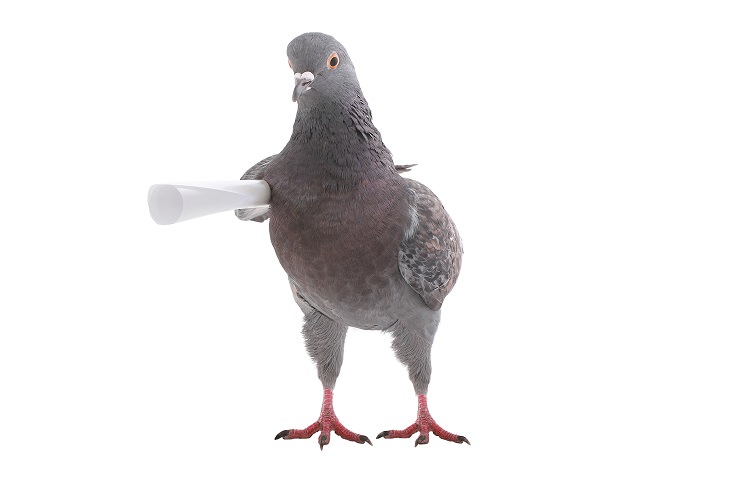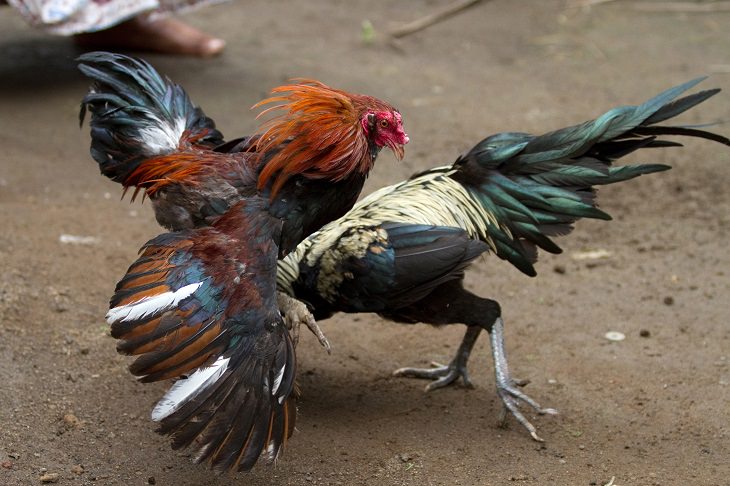1. The Cackling Geese Who Saved Rome
The flourishing Roman empire was under attack by the Gauls during the early 4th century BC. They had already defeated the Romans at the Battle of the Allia, and they were now moving in on Rome itself. They entered the city and intended to ascend the Capitoline Hill in secret.
They were silent and quick, moving through the city undetected by the sentinels and watchdogs. They almost got away with sneaking up one of the hills when they were noticed by some Roman geese. They started honking away and the noise woke up nearby guards and the city's defenders. Rome was saved, and the geese enjoyed admiration and fame.
2. The Wolves Who Temporarily Ended World War I
German and Russian troops fought in the winter of 1916-1917 in an area that stretched from the Black Sea in the south to the Baltic sea in the north. The harsher than normal winter forced some starving wolves to attack groups of soldiers. It got to the stage where both sides had more casualties from wolf attacks than from the battle.
This caused the two sides to announce a temporary truce so that they could deal with the wolves. They managed to hunt hundreds of wolves, and the rest scattered. After the wolves were gone, both sides went back to fighting each other. These hungry wolves proved that there is no need for war.
3. The Cat Who Opened up a New Chapter in Criminology
Back in 1994, the Royal Canadian Mounted Police force found a body in a shallow grave alongside a blood-soaked jacket. A test proved that the blood belonged to the victim, but they also discovered a long white cat hair. Police already knew that the victim's common-law husband lived near the burial site and owned a white cat called Snowball.
The authorities took some of Snowball's blood to perform a DNA test. It turned out that no laboratory has ever tested a pet's DNA, and nobody wanted to be the first. After a load of calls and much research, an institution finally agreed to help. The police collected blood samples of about 20 cats to make sure that felines don't have similar DNA. The long hair did belong to Snowball and his owner was sent to prison.
This opened up a new chapter of using pet DNA to place criminals, and the National Feline Genetic Database was established as a result.
4. The Pigeon That Saved Hundreds of American Troops
A messenger pigeon by the name of Cher Ami (Dear Friend) lived up to its name during World War I. In October of 1918, more than 500 soldiers found themselves trapped without food and ammunition between enemy lines. The major tried to send them messages, but the first two pigeons were shot down.
Cher Ami got badly wounded, but despite the injury, the winged warrior managed to deliver the message. The trapped men were saved, and the pigeon received the Croix de Guerre from the French government.
5. Laika, Belka, and Strelka - The Dogs Who Conquered Space
The first animal to enter space, Laika the dog, boarded the Soviet spacecraft Sputnik 2 on November 3, 1957. She was a stray as the Soviet assumed that stray dogs were heartier and better suited for harsh conditions. Laika is credited as the one who paved the way for human spaceflight. Sadly, she didn't survive re-entry to earth.
Three years later on August 19, two new dogs, Belka and Strelka, boarded Sputnik 5. They entered space and safely returned to Earth, providing the necessary confidence to send humans into orbit less than a year later.
6. The Sheep Who Proved Cloning Was Possible
Dolly the sheep is the most famous sheep in history. She shaped science, even though she had no clue about her role. Dolly was the first mammal that was fully and successfully cloned using an adult cell. She was born in 1996 and was the only success from 277 attempts.
Cloning techniques were improved significantly as scientists learned more about the cloning process by studying Dolly. She remained healthy and happy until she died in 2003.
7. The Chimpanzee Who Changed Human Understanding
Jane Goodall arrived in Tanzania in July 1960. Her aim was to study chimpanzees who were still a mystery to humans at the time. The first three months revealed nothing as the chimps were shy and did not allow her to get close. Then she came across David Greybeard, a chimp with gray chin whiskers. He gave Jane her first discovery when she saw him sharing pig meat with a female.
Just 4 weeks later, she saw David dipping grass into a termite mound and raising the grass back to his mouth. After David left, Jane poked the grass into the mound and found that the termites bit and held on to the blade. David was using this grass as a tool to fish for termites.
David went on using more tools and by doing so he changed our views on chimps.
8. The Fighting Rooster Who Gave Strength to Ancient Greek Soldiers
An interesting case involving two fighting cocks happened during the first decade of the 5th century BC.
The Athenian general Themistocles was on his way to confront the invading Persian forces, but he stopped to watch two roosters fighting.
The general called his troops over and showed them that the animals did not fight for glory, safety, or liberty but simply because one did not want to give way to the other.
This display of instinctive aggression gave strength and inspiration to the soldiers. The heartened Greeks went on to confront their invaders, saving the very civilization that today finds fried chicken to be excellent food.
9. The Rats and Fleas That Wiped Out a Third of Europe
A deadly pandemic known as the Black Death wiped out a third of Europe in the middle of the 14th century. It was identified as a plague that is caused by the bacterium Yersinia pestis. This bacterium infects rats and other small rodents and is transmitted to people by the bite of infected fleas.
The Black Death spread via trade routes from Central Asia to Europe, killing around 25 million people. Due to all the deaths, there was a labor shortage, which empowered peasants to ask for higher wages and better living conditions. Sadly, it took the plague to improve life for some.
10. The Worms That Developed Agriculture
Charles Darwin adored worms due to the important role they play in the growth of civilization. Worms' excreta, their feeding activities, and their burrowing, bring a number of beneficial effects to the quality of the soil for crop production. Hard working worms have been fertilizing our soils for millions of years - they are the ones that turn the soil into something we can use.



